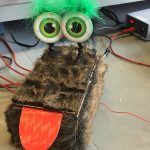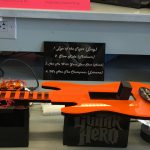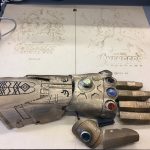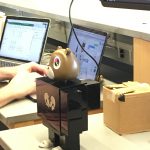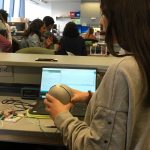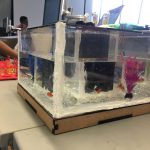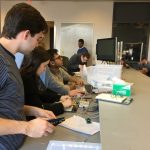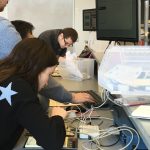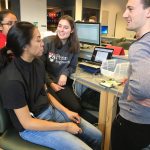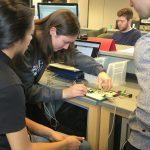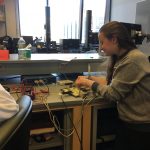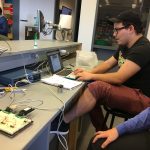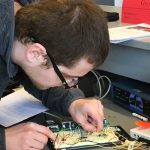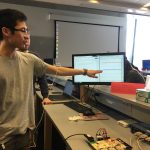by Sophie Burkholder
To finish the second half of Bioengineering Modeling, Analysis, and Design (BE MAD) Laboratory – the hallmark laboratory course of Penn’s Bioengineering program – instructors Dr. Brian Chow and Dr. David Issadore tasked junior undergraduate students with creating their own spectrophotometers for potential use in detecting water-borne pathogens in a design process that involved rapid prototyping techniques, the use of low-cost optoelectronics, and the incorporation of automation software and a graphical user interface for data acquisition. The final projects were assessed for both the creativity of the structural design of the device, and their abilities to measure optical properties of fluorescein, a chromophore used in clinical diagnostics, to determine each device’s accuracy, sensitivity, precision, and dynamic range.
For the final project of the year, many groups planned adventurous structural innovations to house their spectrophotometer circuits. Some of this year’s highlights included a fish tank complete with flashing lights and goldfish, a motorized arm that could successfully shoot a ball into a miniature basketball hoop with every spectrophotometer reading, a guitar with the ability to actually play music, and a working carousel. “My group decided to make a version of the Easy Bake Oven, using an LED oven light bulb, and a motor to open the door,” said junior Alina Rashid. “Of course, it didn’t actually cook anything because of the spectrophotometer inside, but maybe next time!” All of these designs involved the use of CAD-modeling to create sketches and parts that could then be laser-cut or 3D-printed into physical structures. The Department of Bioengineering also allotted each group with a budget for students to purchase any additional parts they required for their designs that were not already available in the lab.
On Demo Day for the spectrophotometer projects, instructors, lab staff, and friends came to the Stephenson Foundation Bioengineering Educational Laboratory and Bio-MakerSpace to assess final designs and celebrate the end of the semester. Given three solutions of unknown concentrations, students used their completed spectrophotometers to create standard curves using Beer-Lambert’s Law and attempt to determine the concentrations of the provided solutions. “I always love Demo Day because that’s when all separate aspects of the project – the mechanical design, the code, the circuitry – come together to make a device that actually works the way we planned and wanted it to all along,” said junior Jessica Dubuque. After nearly a month of working on the projects, each lab group went into Demo Day with designs they were proud of, and ended the semester on a high note with many new insights and lab skills under their belt for the beginning of their Senior Design projects in the fall.

